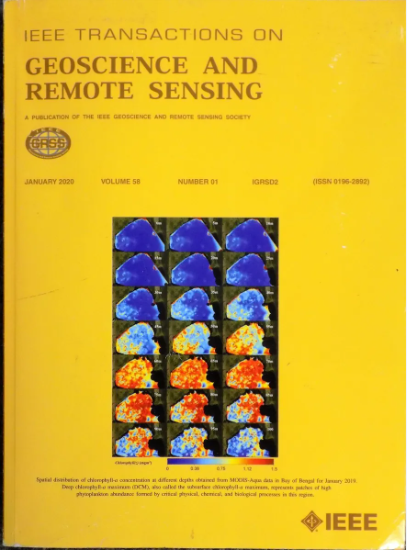AirGeoNet: A Map-Guided Visual Geo-Localization Approach for Aerial Vehicles
IF 7.5
1区 地球科学
Q1 ENGINEERING, ELECTRICAL & ELECTRONIC
IEEE Transactions on Geoscience and Remote Sensing
Pub Date : 2024-09-10
DOI:10.1109/TGRS.2024.3456912
引用次数: 0
Abstract
Aerial vehicles (AVs) commonly operate in vast environments, presenting a persistent challenge in achieving high-precision localization. The contemporary popular global positioning methods have their inherent limitations. For instance, the precision of GPS is susceptible to decline or even complete failure when the signal is disrupted or absent. Furthermore, the precision of image retrieval techniques is inadequate. The construction of 3-D models is a time-consuming and storage-intensive endeavor. In addition, scene coordinate regression necessitates retraining to adapt to varying scenarios, which presents challenges when attempting to generalize across expansive environments. Addressing these challenges, we propose a network named AirGeoNet, which integrates satellite images and semantic maps to achieve high-precision efficient localization. In the first phase, we introduce the foundation model DINOV2 to extract features from satellite and aerial images, employ a vector of locally aggregated descriptor (VLAD) for image retrieval to get coarse position, and, finally, significantly enhance retrieval accuracy by combining sequential images with particle filters. Subsequently, AirGeoNet matches aerial images with semantic maps to determine the three degrees of freedom in pose, including position and orientation. The semantic maps utilized by AirGeoNet are sourced from OpenStreetMap and our self-produced QMap, and training is conducted in a supervised manner using real camera poses. Our AirGeoNet method is highly efficient, requiring only a 1546-D feature vector per image for image retrieval and 240k storage for a 0.9-AirGeoNet:航空飞行器的地图引导可视地理定位方法
航空飞行器(AV)通常在广阔的环境中运行,这给实现高精度定位带来了长期挑战。当代流行的全球定位方法有其固有的局限性。例如,当信号中断或消失时,全球定位系统的精度容易下降,甚至完全失效。此外,图像检索技术的精度也不够高。构建三维模型既耗时又耗费存储空间。此外,场景坐标回归需要重新训练以适应不同的场景,这给试图在广阔的环境中进行泛化带来了挑战。为了应对这些挑战,我们提出了一种名为 AirGeoNet 的网络,它整合了卫星图像和语义地图,可实现高精度的高效定位。在第一阶段,我们引入基础模型 DINOV2 从卫星和航空图像中提取特征,采用局部聚合描述符向量(VLAD)进行图像检索以获得粗略位置,最后通过将连续图像与粒子过滤器相结合来显著提高检索精度。随后,AirGeoNet 将航空图像与语义图进行匹配,以确定姿势的三个自由度,包括位置和方向。AirGeoNet 使用的语义地图来自 OpenStreetMap 和我们自制的 QMap,并使用真实的相机姿势以监督方式进行训练。我们的 AirGeoNet 方法非常高效,每幅图像只需 1546-D 的特征向量进行图像检索,0.9- $\text {km}^{2}$的语义地图只需 240k 的存储空间,而在语义丰富的数据集上,单帧定位误差为 2.854 m,在复杂场景中为 11 m,达到了最先进的精度。我们的代码可通过 https://github.com/mxz520mxz/AirGeoNet.git 公开获取。
本文章由计算机程序翻译,如有差异,请以英文原文为准。
求助全文
约1分钟内获得全文
求助全文
来源期刊

IEEE Transactions on Geoscience and Remote Sensing
工程技术-地球化学与地球物理
CiteScore
11.50
自引率
28.00%
发文量
1912
审稿时长
4.0 months
期刊介绍:
IEEE Transactions on Geoscience and Remote Sensing (TGRS) is a monthly publication that focuses on the theory, concepts, and techniques of science and engineering as applied to sensing the land, oceans, atmosphere, and space; and the processing, interpretation, and dissemination of this information.
 求助内容:
求助内容: 应助结果提醒方式:
应助结果提醒方式:


